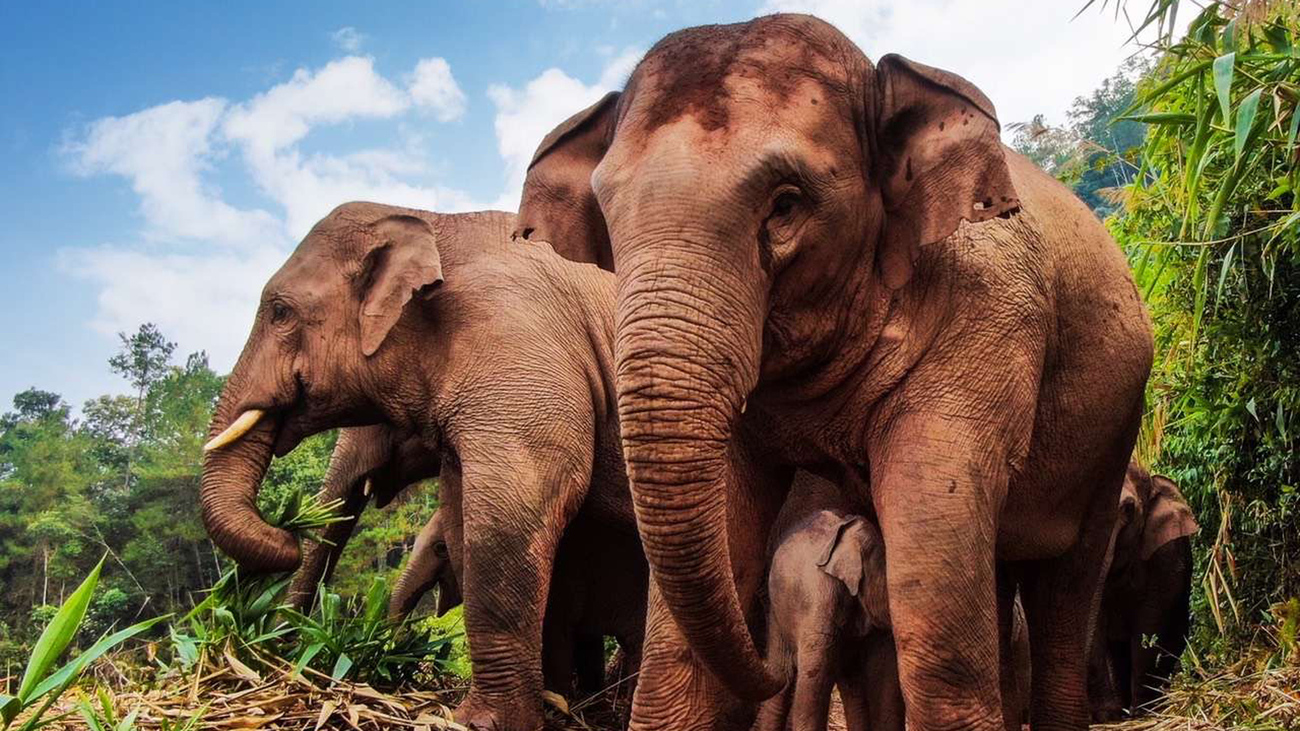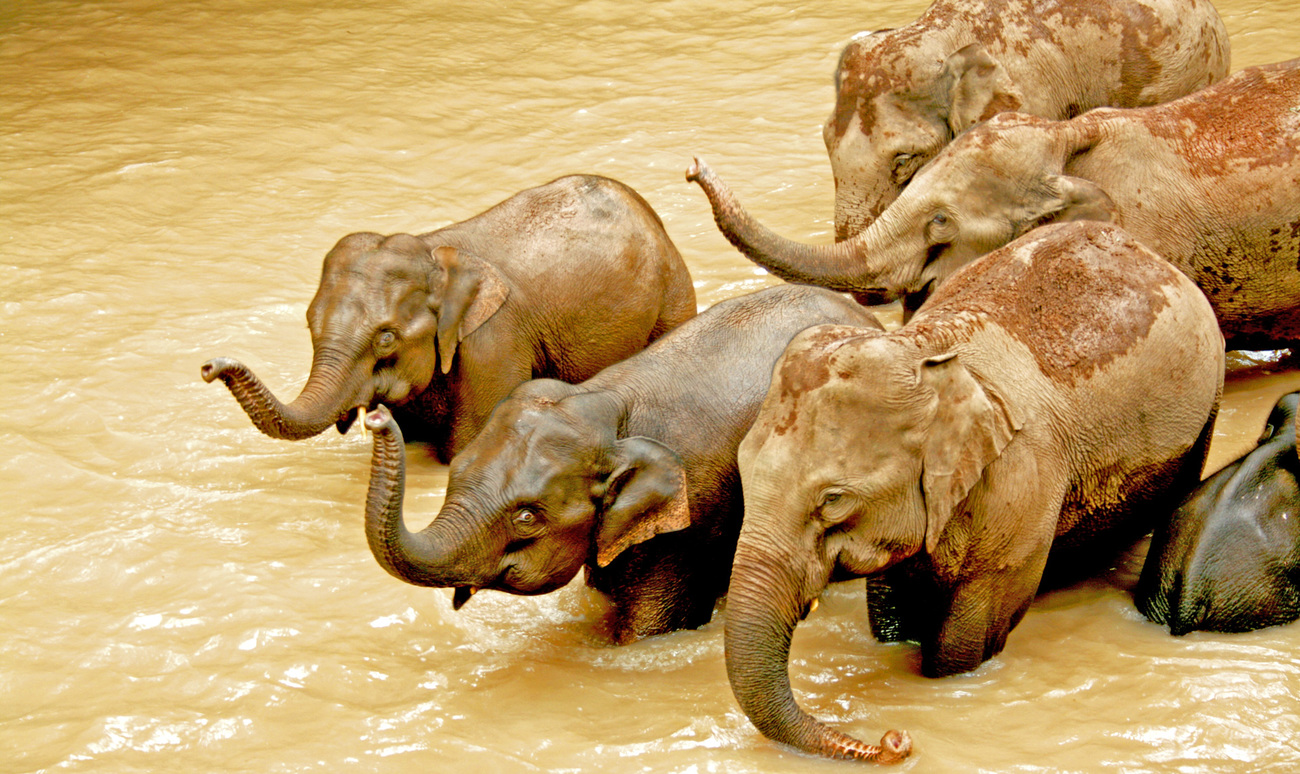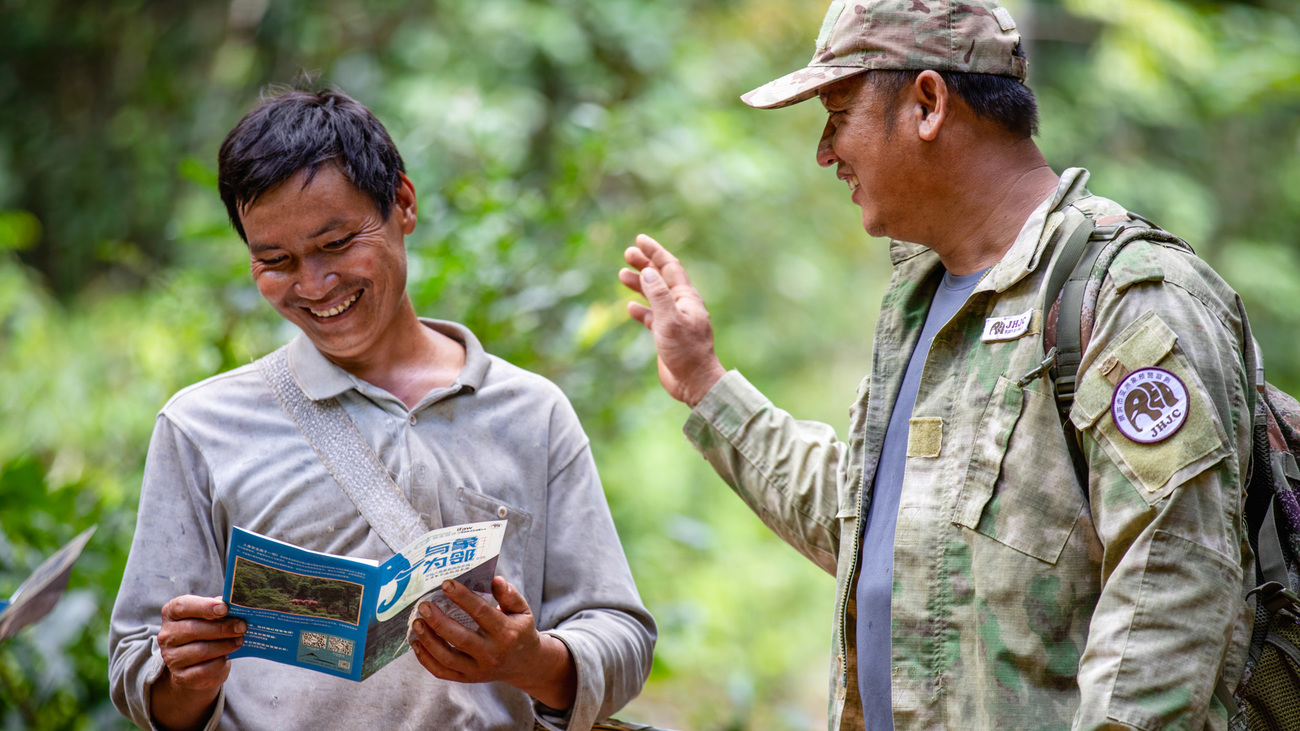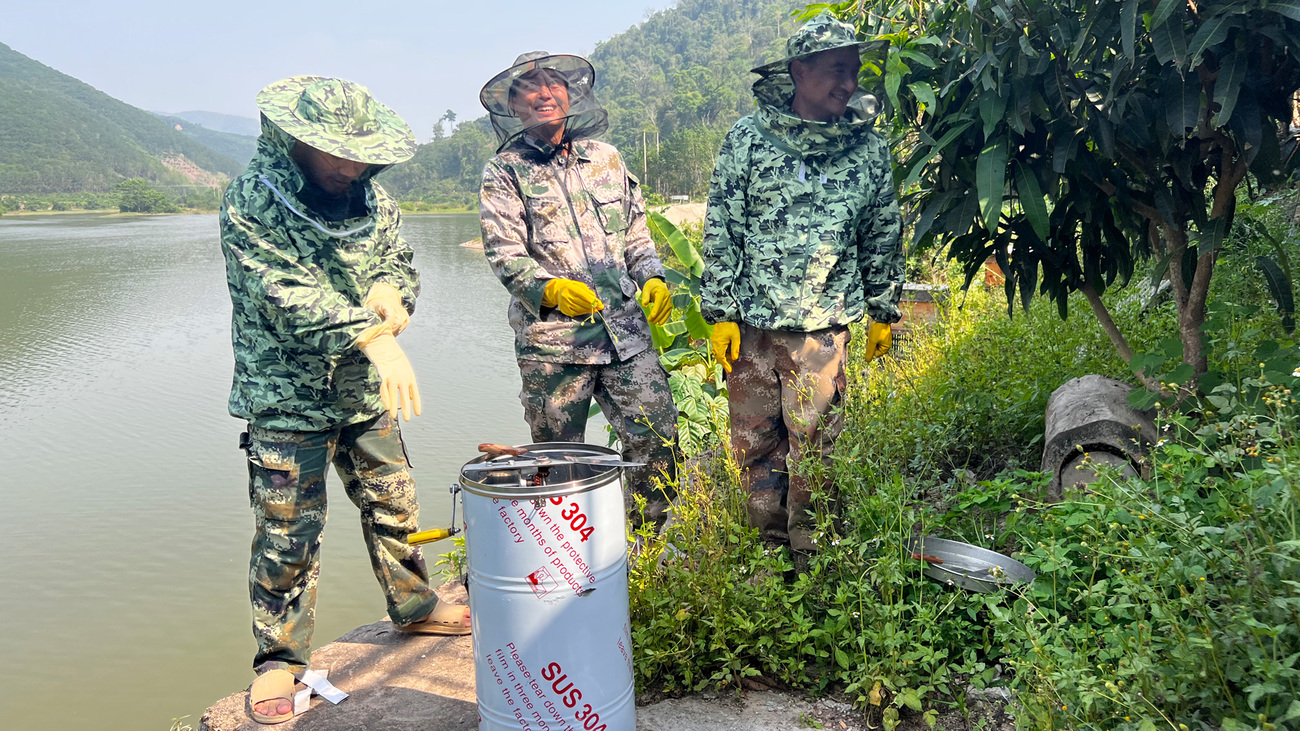Asian elephant protection – China
Conserving Asian elephant populations through coexistence initiativescarbon reduction priority in efforts to protect Asian elephants
carbon reduction priority in efforts to protect Asian elephants

To save thousands of animal species from extinction, economic reforms to save habitat and slow climate change are urgently needed.
That message—that economic change is the key to saving animals—dominated discussions at a major UN biodiversity conference in Montreal hosted by the governments of Canada and China in late 2022.
“We have backed nature into a corner, and it is time to ease the pressure,” said Inger Andersen, executive director of the UN Environment Programme, at the close of the conference.
In rural China’s Yunnan province, IFAW has been acting on that exact message for more than twenty years in a bid to save one of the last populations of Asian elephants.
By doing so, IFAW aims to demonstrate that with the right balance of economic and ecological innovations, the Asian elephant species can be saved.
an iconic elephant species under severe threat
Once common across tropical and subtropical Asia, wild Asian elephants are now living in fragmented and imperiled habitats across 13 countries, where urbanization, rural infrastructure and agricultural expansion drive Asian elephant habitat loss. At present, the population is estimated to have been almost halved by human impacts to about 50,000 animals.
As the elephants’ habitats disappear, they increasingly collide with people and their crops and properties, posing danger to both humans and elephants.
As a result of this human-wildlife conflict, the Asian elephant is listed as Endangered by the IUCN Red List, and the species has also been designated as a Class I protected animal in China’s Wildlife Protection Law since 1988.
In China, Asian elephants are currently only found in the Yunnan province, which borders Myanmar, Laos, and Vietnam. This population of only about 300 elephants is culturally important to the Dai ethnic group in Yunnan.

a long-term multiphase strategy
The first phase of IFAW’s Asian Elephant Protection project, which started in 2000, dramatically reduced conflict between elephants and people.
A system of forest rangers now covers 134 villages, and 8,245 community members have been trained on how to avoid conflict with elephants.
A second phase, which began soon after the project started, has spurred new sustainable industries in the region, such as beekeeping. This generates new wealth and social change that’s attuned to protecting the elephants’ rainforest habitat.
Now, IFAW is launching a third phase of the project aimed at coupling the sustainable economic and social changes at its core with China’s ambitious strategy to slow the rate of climate change.
“We’ve made enormous progress helping communities in Yunnan live in harmony with elephants while promoting sustainable new industries that preserve the elephants’ rainforest habitat,” says Beijing-based YK Ma, the program manager at IFAW China.
“Now, we want to ensure that these communities are helping save elephants through economic innovations that also help China achieve carbon neutrality.”

economic and social change to ensure human–elephant coexistence
From 2000 to 2005, IFAW provided microcredit loans to local communities, especially women’s groups, to help them shift to alternative crops that elephants don’t eat and that have high economic value. The program covered more than 210 households from seven villages and resulted in a 35% average increase in income with a 100% repayment rate.
Today, the core of IFAW’s Asian elephant program in Yunnan aims to help local people shift the regional economy away from rubber plantations, which destroy the elephants’ rainforest habitat.
The traditional rubber economy is detrimental to soil quality, water preservation, and rainforest protection, says YK. “Once the rainforest is cleared for rubber plantations, it’s gone forever,” she emphasizes.
In recent years, the program has achieved great success in fostering beekeeping and sustainable honey production businesses, as well as tropical fruit and macadamia nut growing businesses, as alternatives to rubber, with high participation from women.
“The traditional rubber economy is based on men doing the harvesting while women are raising children,” explains YK. “Our innovations introducing the beekeeping industry promoted new roles for women in crucial household income generation. That promotes domestic respect and equality.”

aligning with climate change reduction strategies
To ensure IFAW’s Asian Elephant Protection project helps accelerate China’s drive to reduce carbon emissions, IFAW and its local partners have developed an innovative carbon sequestration community model that integrates Asian elephant conservation with carbon sequestration by capturing carbon in trees and the soil. Carbon sequestration combats climate change through the long-term removal of carbon dioxide from the atmosphere.
Daotangqing, a community of 34 households where the project was first piloted, is located on the edge of Xishuangbanna National Nature Reserve, one of the most critical habitats for Asian elephants.
As part of the project, an eco-friendly plantation plan was developed for the community to boost incomes while protecting elephant habitat. The plan used a specialized carbon emission reduction calculation and certification method to gauge village-level carbon sequestration based on the adoption of solar energy sources and the transition to alternative crops that capture a lot of carbon, such as mango and macadamia. These crops can also be grown near the village so people avoid venturing to the forests to cut down trees.
In August 2021, IFAW, Swire Coca-Cola and Xishuangbanna Tropic Rainforest Conservation Foundation (XTRCF) joined forces to extend the existing initiative in Daotangqing to additional communities.
“We hope to contribute to biodiversity conservation and China’s 2060 carbon neutralization goal by exploring and sharing village-level innovative approaches,” says YK.
For YK, saving China’s last population of Asian elephants comes down to helping local communities innovate and adopt economic and social changes that will remain sustainable far into the future – a future where carbon emissions will also be dramatically reduced.
“To save the elephants, you have to care about the people,” she says. “They’re the ones making the sacrifices.”
Related content
Every problem has a solution, every solution needs support.
The problems we face are urgent, complicated, and resistant to change. Real solutions demand creativity, hard work and involvement from people like you.